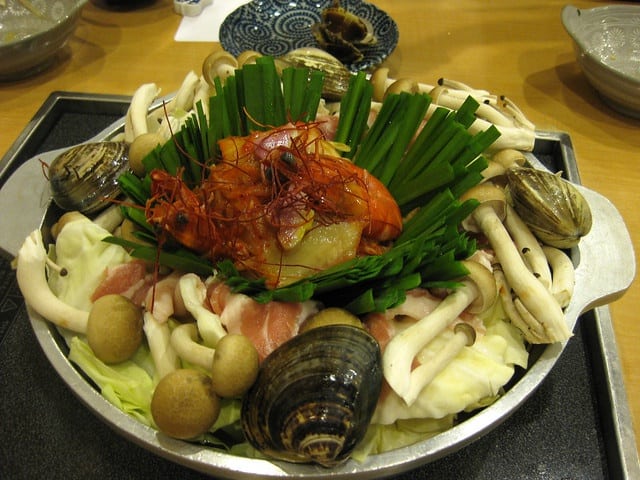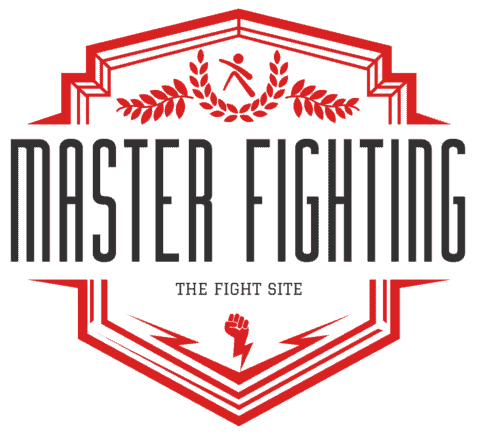What Is A Sumo Wrestlers Diet?
It’s no secret that athletes of all shapes and sizes spend a huge amount of time perfecting their diets and training to get themselves to achieve peak performance shape. Sumo wrestlers are no different.
Although people may think Sumo wrestlers just eat whatever they want to get to that size, a sumo wrestlers diet follows a strict routine. The Sumo diet is surprisingly healthy. They only eat twice a day skipping breakfast eating lots of vegetables, high protein foods and a dish called Chanko Nabe or Cahnko.

How Many Calories do Sumo Wrestlers Eat?
Mongolian Sumo wrestler Byamba Ulambayar, who weighs in at a 360 pounds eats around 4,000 calories, and while that’s more than double what an average person might eat on a daily basis, that’s still not a huge amount for a Sumo wrestler.
All Sumo wrestlers have different dietary requirements due to weight, height and muscle mass. The average calorific intake for a sumo wrestler is anywhere between 3,000 and 8,000 calories a day. Some have reported consuming as much as 10,000 calories or more per day!
What Do Sumo Wrestlers Eat?
I imagine you are wondering what Sumo wrestlers eat in order to consume the equivalent of 3 to 5 days worth of the average person’s calorific intake. Well wonder no more.
Sumo Wrestlers only eat two meals a day. The don’t eat breakfast, instead their first meal is after morning training. Rice is also key part of the sumo wrestler diet, and they eat lots and lots of it. Trainee Sumo Wrestlers eat lots of rice to build up their weight to help give them a competitive advantage
Udon noodles are also another key component in their diet and eaten in large quantities at dinner, which usually also includes other healthy foods like fish and salad.
What Is Chanko Nabe?
According to Shin Sen Gumi Chanko is a term used to refer to all types of cuisine made by Rikishi (Sumo wrestlers). The word Chanko comes from combining chan, meaning “parent” and ko meaning “child”, and refers to the act of everyone, coaches and trainees alike, eating the same meal together.
Chanko can be made from any vegetables and a form of protein such as chicken or beef and also usually includes tofu. Chanko is like a hot pot. All of the ingredients are added to a large pot containing Dashi fish broth, salt, soy sauce, Mirin (a type of rice wine with a lower alcohol content than Sake) and Sake then cooked together.
There are lots of different ways you can make this nutritious stew. It can be made with beef, pork or chicken, either chopped or made into meatballs. It can be served alone, with rice, Udon noodles or side dishes like omelets and dumplings. While Chanko is a fairly healthy meal it also helps with Sumo wrestlers huge calorific intake with bowl after bowl after bowl being eaten.
On competition days, sumo wrestlers will only eat chicken Chanko Nabe, and it’s not for nutritional reasons. Chanko Nabe served during sumo tournaments is made exclusively with chicken, the idea being that to win a wrestler should always be on two legs like a chicken, not all fours.
Nap Time
As part of their routine, Sumo wrestlers, take a nap after eating. This goes against general health advice as going to sleep directly after eating means your body doesn’t get a chance to burn off the calories consumed.
The reason Sumo wrestlers take a nap after eating is to slow their metabolism and not burn off all of the calories they have just consumed helping them to gain weight. This extra weight gain helps to increase belly fat, lowering their center of gravity, which is needed to maintain stability in the ring thus giving a competitive advantage in contests.
Keeping hydrated

As a Sumo wrestler typically loses between 10 and 15 pounds in sweat alone during his morning workout keeping hydrated is important. For this reason they drink lots of water and green tea to stay hydrated.
Lets not forget the beer! Or any other alcoholic drink, Sake for example. Sumo wrestlers drink alcoholic drinks as they are a form of empty calories, they have no nutritional value.
Most alcoholic drinks contain traces of vitamins and minerals, but not usually in amounts that make any significant contribution to our diet. Because alcohol is made from sugar or starch, it contains lots of calories, seven calories a gram in fact, almost as many as pure fat!
Are Sumo Wrestlers Healthy?
Combined with their relatively healthy diet and demanding training regimen Sumo wrestlers are generally in great shape. Although they all may not look it, it takes a lot of muscle to carry not only their own body weight but to also pick up and move around their opponents.
Japanese Sumo wrestlers can be described as metabolically healthy obese. They have normal levels of triglycerides, a type of fat in their blood, and surprisingly low levels of cholesterol, both of which lower their risk of heart disease, heart attack, and stroke.
This means although obese, due to their high levels of activity they have very little visceral fat. They store most of their fat underneath their skin as subcutaneous fat.
Subcutaneous fat is found just beneath the skin and can cause dimpling and cellulite. Visceral fat is located in the abdomen and surrounding the vital organs. It can cause liver problems and even strangle your heart.
People who appear to be thin can have high levels of visceral fat. High levels of visceral fat has been linked to hypertension, diabetes, heart attack and even stroke.
Due to their healthy Sumo diet, high levels of activity and relativity low levels of visceral fat, scientists consider Sumo wrestlers to be healthy.

Author Bio
Hi, I am William. I started out in martial arts with Goshin Ju Jitsu when I was 7 years old. I am passionate about martial arts and love sharing everything I learn. I created Master Fighting to become a resource for learning about martial arts and alternative fighting styles. Learn more about me.


